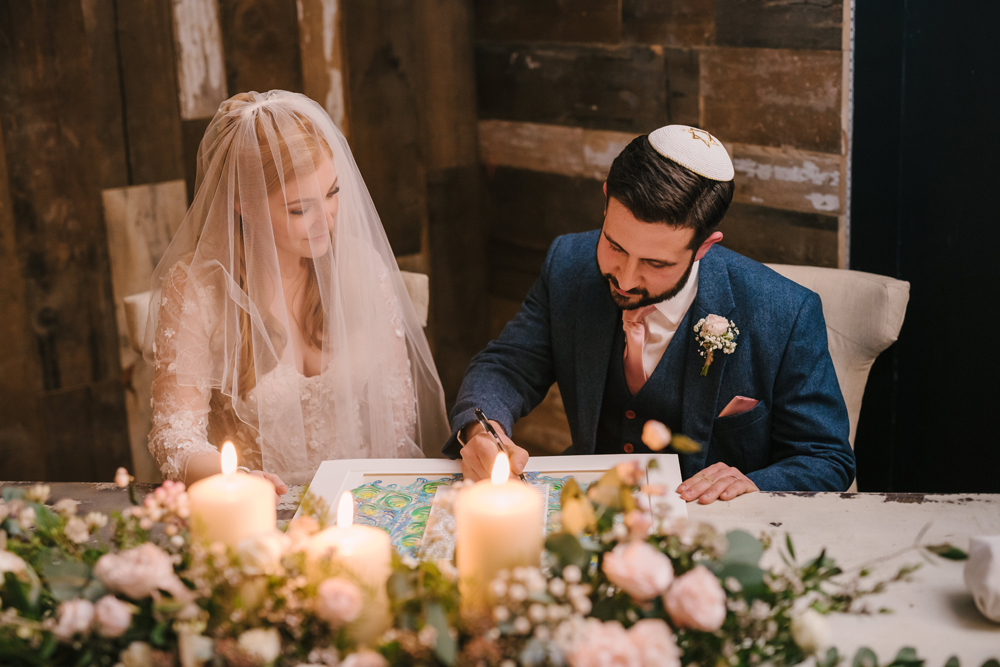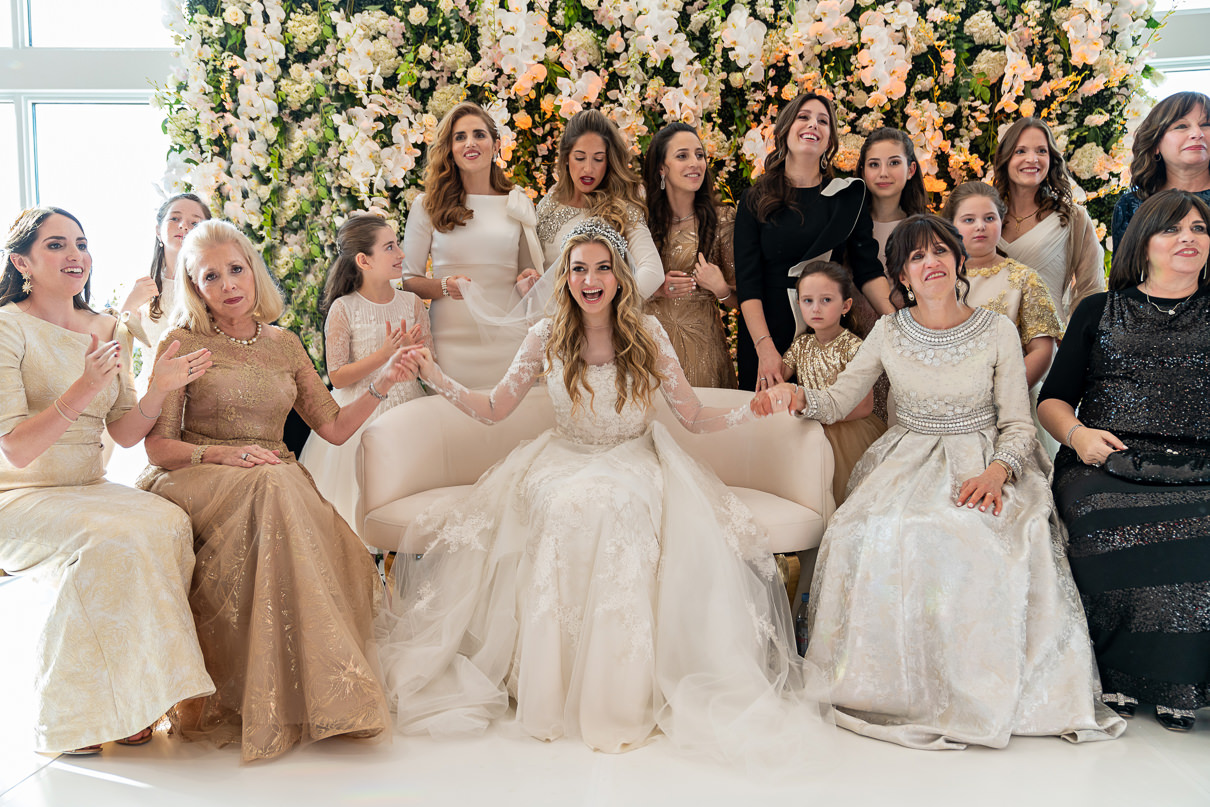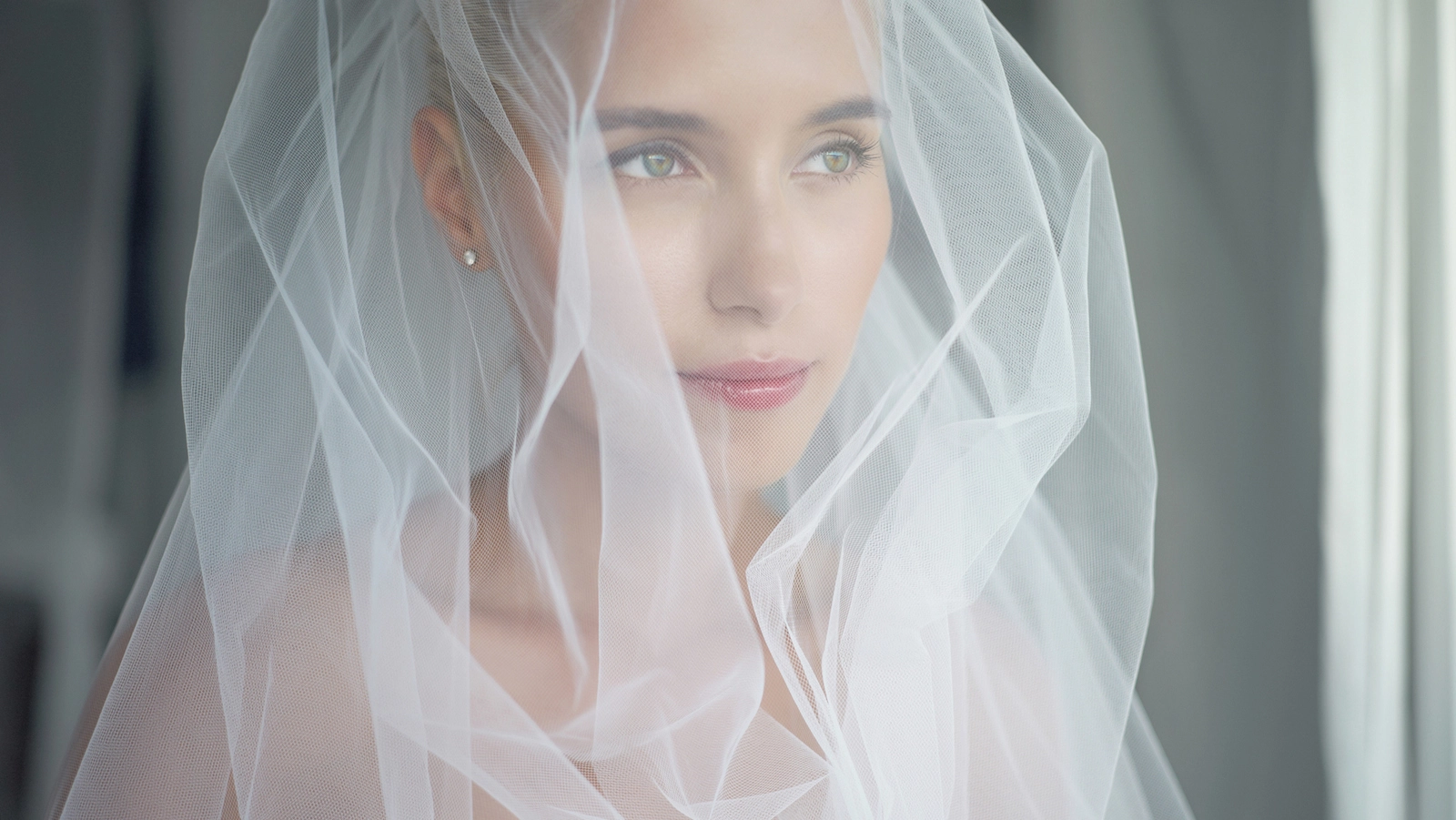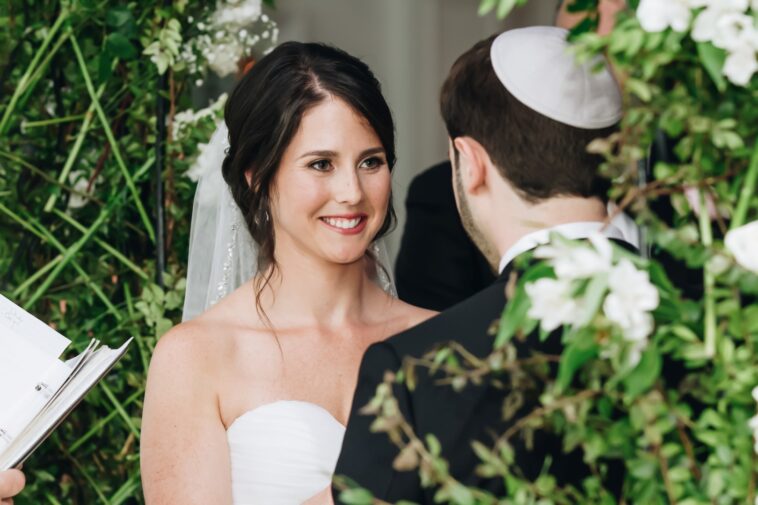A traditional Jewish wedding has been incorporated with intricate traditions, profound symbolism, and cultural meaning. Every component of these celebrations, from the joyful hora dance to the hallowed canopy of the chuppah, adds to their distinct beauty. This article will explore the significance and meaning of each of the eight main components that make up a typical Jewish wedding.
1. What is a Chuppah, and Why is it Significant?
The home that the couple will build together is symbolized as the chuppah, a canopy that serves as the venue for the wedding. This hallowed area symbolizes the safety and security the couple will offer to one another. The chuppah, frequently decorated with exquisite textiles and flowers, symbolizes the bride and groom’s love and devotion.
2. Ketubah Signing: Emphasizing Commitment

The essential ceremony of the ketubah signing, which highlights the couple’s commitment to one another, is central to every traditional Jewish wedding. A marriage contract that specifies the bride and groom’s rights and responsibilities is called a ketubah. The papercut ketubah is one of the most unusual and gorgeous designs among the many varieties of ketubahs.
3. A Blend of Artistry and Tradition
Papercut ketubahs are unique works of art that give the marriage ceremony a refined touch. These precisely crafted ketubahs display the artisan’s talent and inventiveness with their elaborate motifs carved into the paper. The intricate designs represent the couple’s interdependence and the beauty that emerges when they set out on their journey of love together.
4. The Dance of the Hora: Spiraling into Celebration
The hora takes center stage as the ceremony transitions to the festive celebrations. Friends and family excitedly crowd around the newlyweds as they are carried on chairs in this energetic dance. The hora represents the highs and lows of married life, with the couple lifted up at happy times and their community supporting them in difficult times.
5. Breaking the Glass: A Symbolic Shatter of Reality
The groom traditionally breaks a glass underfoot to signal the end of the ceremony as the celebrations come to an end. This act of symbolism highlights the delicacy of life and serves as a calming reminder of the challenges ahead. Past its typical importance, the glass shattering also marks the official end of the wedding ceremony and the beginning of the cheerful and festive part of the celebration.
6. Traditional Jewish Wedding Attire: Beyond the White Gown

In terms of clothing, traditional Jewish weddings include unique outfits that are moving representations of the wearer’s cultural background and sense of taste. Traditionally, the bride wears a white gown that is elegantly coupled with a veil, signifying ideas of purity and modesty. In the same vein, the groom may wear an important item of clothing called a kittel, a white ceremonial gown with deep symbolic meaning that stands for spiritual purity and the equality of all people before God, enhancing the visual story of this holy marriage.
7. The Importance of the Seven Blessings: Nurturing the Marital Bond
Sheva Brachot, or the seven blessings, is spoken during the event. With each blessing concentrating on one particular aspect of married life, they all highlight the happiness and celebration of the relationship. Recited both throughout the wedding ceremony and the week that follows, the Sheva Brachot helps to create a feeling of continuous celebration and community support for the newlyweds.
8. Sweet Traditions: The Role of Food in Jewish Weddings
Jewish celebrations, including marriages, are complete with a feast. Jewish wedding dinners typically feature symbolic delicacies like wine, challah, and other dishes that stand for prosperity and sweetness. Enjoying a meal together strengthens the feeling of happiness and community that accompanies the union of two people.
9. Capturing the Moments: The Role of Photography and Videography
Modern Jewish weddings have easily incorporated professional photography and videography due to the value placed on keeping memories alive. Preserving the essence of the ceremony, energetic dances and poignant moments guarantees that the priceless memories created on this remarkable day will last a lifetime and become everlasting treasures that are passed down through the generations, bridging the past, present, and future.
10. The Bedeken: Unveiling the Beauty Within

The Bedeken, a traditional Jewish wedding ritual, is a profound and intimate moment preceding the main ceremony. This Yiddish term, meaning ‘covering’ or ‘veiling,’ carries deep symbolic value in Jewish matrimony.
In a private setting, surrounded by close family and friends, the groom approaches the bride to place a veil over her face. This act transcends physical beauty, highlighting the groom’s commitment to valuing the bride’s inner qualities and essence above all.
Echoing the biblical tale of Jacob, who married Leah instead of his intended, Rachel, due to a veiling mix-up, the Bedeken also symbolizes the importance of trust and recognition in the relationship. It ensures that the groom acknowledges and marries the right bride.
This ceremony is not just a solemn occasion; it’s often marked by joyful singing and dancing, bringing a celebratory atmosphere to this poignant moment. It’s a chance for the couple to connect deeply, exchange blessings, and express private sentiments of love and support.
Concluding with the Bedeken, the couple then advances to the chuppah for the main wedding ceremony. This tradition serves as a meaningful prelude, underscoring love, trust, and the appreciation of inner beauty as the couple steps into their shared future.”
Conclusion
A classic Jewish wedding is a colorful tapestry woven with ancient traditions, significant ceremonies, and the distinct personalities of the engaged couple. Every component, from the chuppah to the shattering of the glass, adds to a timeless occasion. The beauty of a traditional Jewish wedding remains and creates lifelong memories as long as couples embrace and modify these traditions.
The ketubah signing, with its visual appeal, especially for papercut ketubahs, is the centerpiece of this event and a monument to the marriage of tradition and artistry. The marriage contract represents the complexities and beauty of the couple’s commitment to one another, just as the delicate paper is meticulously cut to create a beautiful design. For this reason, the papercut ketubah is a perfect focal point for a traditional Jewish wedding.




